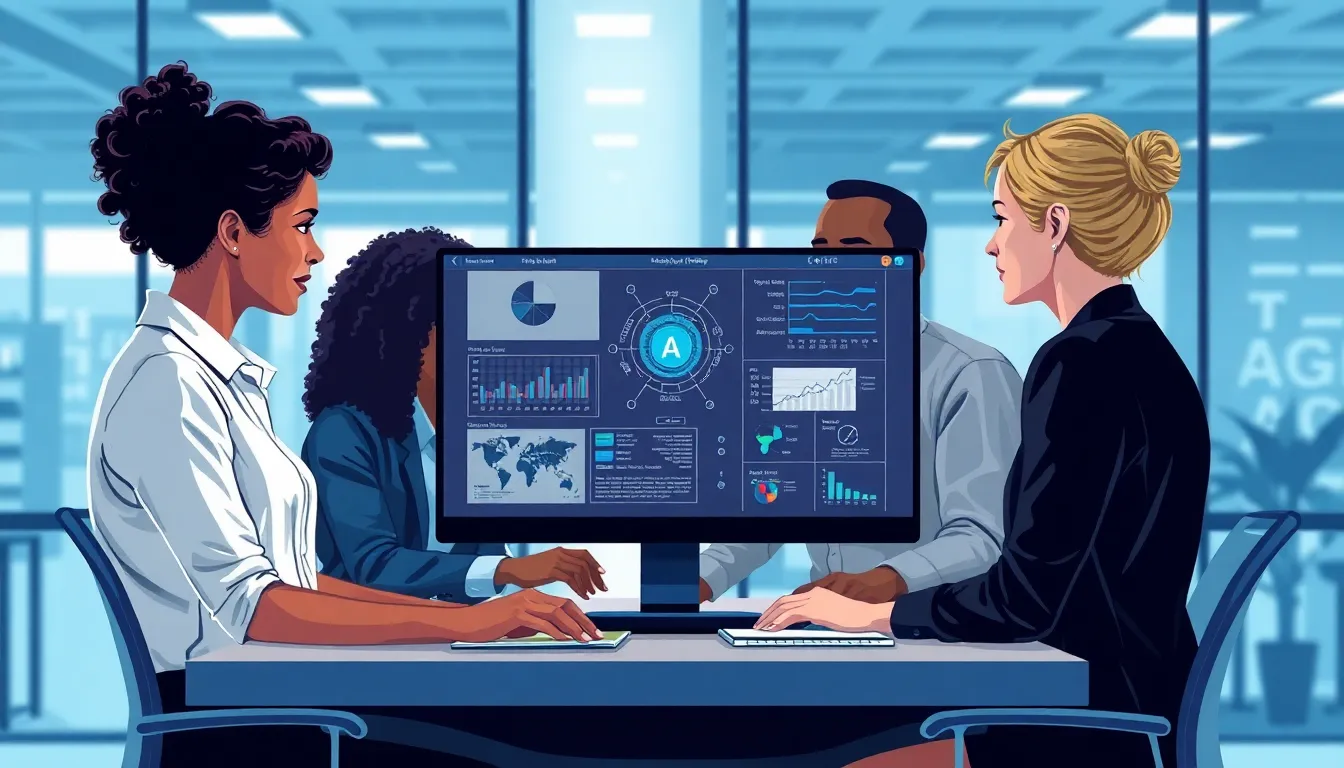In a world where coffee machines can brew the perfect cup while you’re still hitting the snooze button, AI automation is taking center stage. Businesses are racing to embrace this tech marvel, and who can blame them? Imagine a life where tedious tasks vanish faster than your weekend plans. With AI handling the heavy lifting, employees can focus on what really matters—like perfecting their meme game.
But it’s not just about saving time; it’s about unleashing creativity and innovation. AI automation isn’t here to take jobs; it’s here to transform them. From chatbots that never sleep to algorithms that predict trends, the future is looking bright—and a little bit sassy. Buckle up as we dive into the fascinating world of AI automation, where efficiency meets a sprinkle of humor, and the possibilities are endless.
Table of Contents
ToggleOverview of AI Automation
AI automation enhances workplace efficiency by managing repetitive tasks, freeing up human resources for creativity and innovation. Understanding its intricacies allows organizations to leverage technology effectively.
Definition and Importance
AI automation refers to using artificial intelligence to perform tasks without human intervention. It plays a crucial role in modern business environments by increasing productivity and reducing operational costs. By automating routine activities, companies can redirect human efforts toward strategic initiatives that drive growth. This transformation emphasizes the positive impact on job roles, enabling employees to engage in more meaningful work. Organizations that adopt AI automation benefit from faster decision-making, improved accuracy, and enhanced customer experiences. AI’s importance lies in its ability to elevate overall performance across various sectors.
Key Technologies Behind AI Automation
Numerous technologies drive AI automation, making it a powerful tool in the workplace. Machine learning enables systems to learn from data patterns and make predictions. Natural language processing allows machines to understand and interact with human language, enhancing communication. Robotic process automation streamlines workflows by mimicking human actions in digital systems. Additionally, computer vision empowers systems to interpret and analyze visual data from the environment. Combining these technologies creates a robust foundation for AI applications. Each component significantly contributes to refining processes and optimizing productivity in various industries.
Benefits of AI Automation

AI automation offers numerous advantages, significantly enhancing workplace dynamics and productivity. Key benefits include increased efficiency and cost reduction.
Increased Efficiency
Increased efficiency marks one of AI automation’s hallmark benefits. Tasks that once required extensive human effort can now be handled by AI systems, allowing employees to redirect their attention. For instance, chatbots manage customer inquiries promptly, freeing up time for staff to engage in complex problem-solving. Natural language processing enables quick data analysis, elevating decision-making speeds. By minimizing routine disruptions, organizations foster a more dynamic work environment, resulting in improved workflow and faster project turnaround.
Cost Reduction
Cost reduction remains a critical focus for businesses striving to maintain competitiveness. AI automation optimizes resources, cutting operational expenses significantly. Robotic process automation eliminates repetitive tasks like data entry, reducing labor costs. Companies experience lower error rates due to enhanced accuracy, further decreasing long-term financial impacts. With AI-driven insights, organizations can make informed decisions that streamline processes and enhance profitability. Emphasizing efficiency leads to increased returns on investments and sustainable operational strategies.
Challenges of Implementing AI Automation
AI automation presents several challenges that organizations must navigate effectively. Technical barriers and ethical considerations are among the most significant obstacles faced during implementation.
Technical Barriers
Incompatibility of existing systems frequently hinders AI integration. Organizations often struggle with outdated infrastructure that cannot support advanced AI technologies. Staff may lack the necessary expertise to manage AI tools, leading to ineffective utilization. Additionally, data quality poses a critical issue; poor data can lead to inaccurate AI outcomes. Security concerns arise as well, particularly regarding sensitive information and data breaches. Organizations must proactively address these technical barriers to ensure smooth integration.
Ethical Considerations
Ethical implications play a crucial role in AI automation. Concerns about job displacement create anxiety among employees, prompting resistance to new technologies. Transparency is essential; stakeholders need clarity on AI decision-making processes. Bias in algorithms can skew results, potentially leading to unfair treatment or discrimination. Moreover, privacy issues must be acknowledged, as AI systems often require extensive data collection. Organizations must prioritize ethical considerations to foster trust and ensure responsible AI deployment.
Future Trends in AI Automation
AI automation continues to evolve, pushing the boundaries of technology and transforming various aspects of work. Key trends highlight its impact on employment and showcase emerging technologies that shape its future.
Impact on Employment
While AI automation enhances efficiency, it also influences employment dynamics. Job roles are shifting rather than disappearing. Employees transition from repetitive tasks to higher-level responsibilities like strategic planning and creative problem-solving. As AI takes over routine activities, organizations require a workforce skilled in interacting with these technologies. Workers evolve by embracing continuous learning and upskilling opportunities, which prepare them for a more collaborative environment with AI tools. The future holds a greater emphasis on human-AI collaboration, fostering innovative workplaces where human intuition complements AI capabilities.
Emerging Technologies
Innovations in AI automation drive the next wave of advancements. Key emerging technologies include enhanced machine learning algorithms that improve over time, providing more accurate predictions and insights. Natural language processing continues to bridge communication gaps between humans and machines. Robotic process automation expands beyond simple tasks, becoming integral for complex processes in industries such as finance and healthcare. Additionally, computer vision technology revolutionizes quality control and inventory management, allowing for real-time monitoring and optimization. As advancements unfold, integration with cloud computing and edge computing promises to enhance scalability and performance in AI-driven initiatives.
AI automation is reshaping the workplace landscape by enhancing efficiency and enabling employees to engage in more meaningful tasks. As organizations embrace these technologies, they can unlock new levels of productivity while addressing the challenges that come with implementation.
The shift towards AI doesn’t mean job loss; instead, it paves the way for roles that require creativity and strategic thinking. Continuous learning and adaptation will be essential as employees navigate this evolving environment.
Ultimately, the integration of AI automation stands to foster innovation and growth, creating a dynamic workplace where human skills and artificial intelligence work hand in hand.



